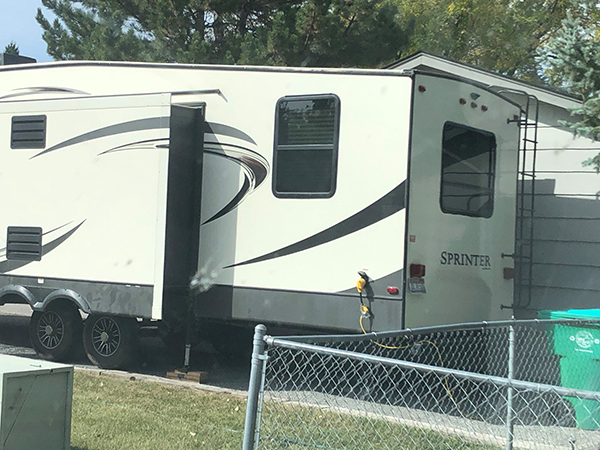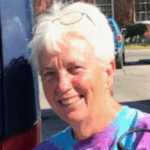Having traveled through the backroads of 49 states over the last 16 years, I thought I saw it all. But in my week of scooting about in Idaho, I’ve been gobsmacked. As a longtime nomad, living in my van as I chronicle family and youth homelessness (www.hearus.us), I notice campers.
I don’t have camper-envy. I’m seeing rigs parked next to houses in all sorts of neighborhoods, with tell-tale electrical cords connected to the house. Looking closer, I see signs of life in the umbilical-corded little mobile homes. Someone is living in the camper, in a driveway, front yard, or on the street—typically in violation of local codes.
Not just a handful. I’d say at least 50% of RVs parked at a house have cords.
Idaho, a state with not only record Covid deaths and infections, also has a brutal housing crisis. Symptoms include out-of-reach rents, obscene price tags on what few are for sale, realtors circling buyers and sellers like sharks sensing blood in the water, and a skyrocketing homeless crisis that includes tens of thousands of babies, toddlers and school kids.
Imagine living in one of these campers in Idaho’s ravaging winter. I can tell you that campers aren’t designed for extremes—hot or cold. Sure, it’s more private to live in a camper than to be doubled up with someone. I get that, as someone who stays in my camper when I visit family and friends. But I have options. I’m choosing to live in a tin can.
The explosive nature of Idaho’s housing crisis has no easy answers. In addition to countless adults stuck in these less-than-ideal circumstances, think about the families, many with infants who have critical developmental needs that cannot be met when living in cramped spaces.
The level of denial in Idaho is seismic. And we all know what happens when the earthquake strikes.
Diane Nilan is President of HEAR US Inc.,an organization that gives voice to families and youth experiencing homelessness. Nilan has devoted her life to advocating for and presenting the real face of homelessness in America, focussing on families and children. She has more than three decades of experience running shelters; advocating for improved state and federal policies; filming/producing award-winning documentaries. Her latest work is the book, Dismazed and Driven: My Look at Family Homelessness in America and The Three Melissas.


